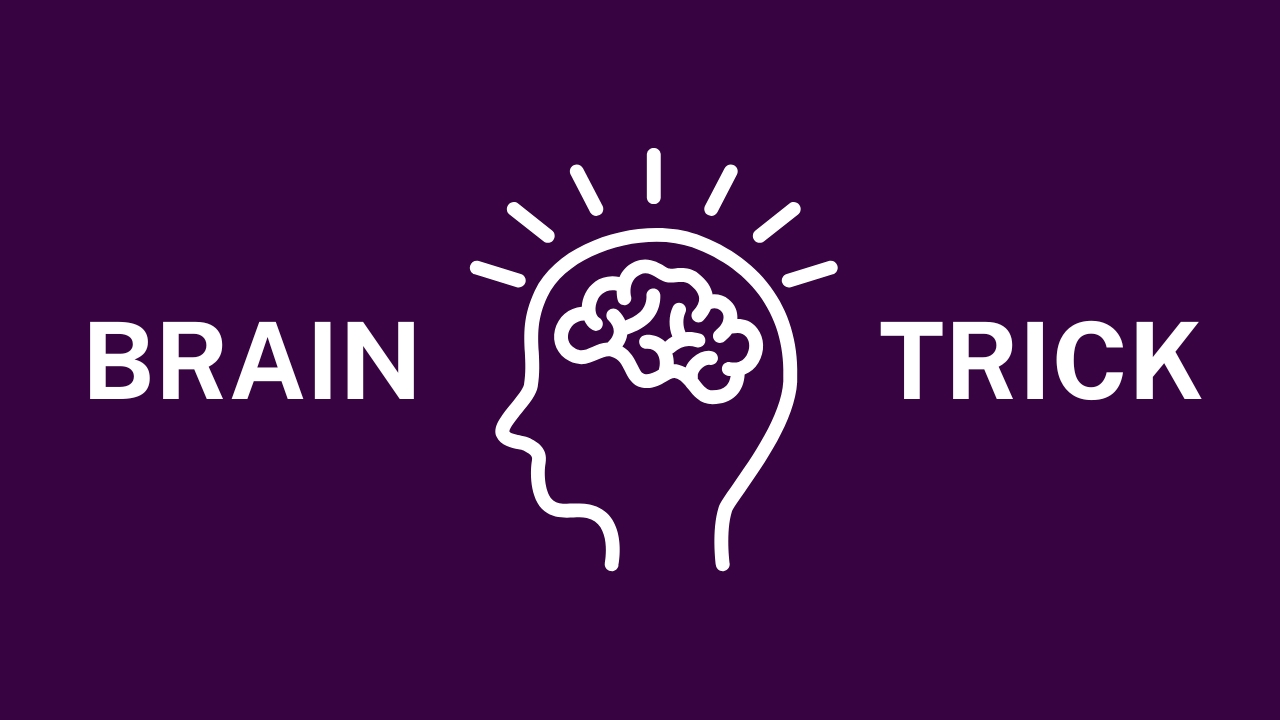This article explores a transformative brain trick designed to enhance mental clarity, boost productivity, and cultivate intentional living, offering readers actionable steps to revolutionize their mindset and improve their daily lives.
Table of Contents
Introduction
Imagine having the ability to reshape your mind, boost productivity, and transform your habits—all with one simple method. Whether you’re looking to improve your health, excel academically, or grow on your self-improvement journey, understanding and applying this powerful “brain trick” could be the key to unlocking your full potential.
This post will explore how this brain trick works, the science behind it, and how you can seamlessly incorporate it into your daily life to achieve tangible results.
What exactly is the “Brain Trick,” and why is it important to you?
The “brain trick” is a simple yet revolutionary practice rooted in research on how the brain processes information and forms habits. At its core, it uses neuroplasticity—the brain’s ability to rewire itself in response to new experiences—to help you break old habits, learn faster, and enhance your overall cognitive health.
By engaging specific techniques like visualization, habit stacking, or reframing negative thoughts, this trick taps into the brain’s adaptive power to improve mental clarity, memory, and focus. Whether you’re a student seeking learning hacks or a self-improvement enthusiast hoping to overcome mental blocks, this approach can work wonders.
Key Benefits of the Brain Trick
- Enhanced Brain Health: Strengthen neural connections and reduce cognitive decline.
- Improved Learning Abilities: retain more information in less time.
- Boosted Productivity: Build effective habits without the overwhelmed.
- Greater mindset shift: break through self-limiting beliefs and create the life you want.
The Science Behind the Brain Trick
To implement the brain trick effectively, it’s important to understand how the brain works. Here are a few foundational concepts that make this practice so impactful.
Neuroplasticity—the Brain’s Superpower
Neuroplasticity allows the brain to form new neural pathways based on repeated actions and thoughts. Think of it as the brain’s way of “reprogramming” itself. This means you have the power to rewire negative habits and replace them with positive, goal-oriented behaviors by simply repeating specific actions consistently over time.
How Habits Shape the Brain
Every time you repeat an action—whether it’s brewing your morning coffee, writing in your journal, or scrolling social media—you strengthen the neural pathway associated with that action. With enough repetition, it becomes automatic. The brain trick takes advantage of this mechanism by helping you consciously replace unproductive habits with better ones.
Visualizing Success for Cognitive Enhancement
Studies have found that visualization activates the same areas of the brain as physically performing a task. By intentionally picturing yourself succeeding—whether it’s acing an exam or running a marathon—you prime your brain for better performance and focus.
Practical Applications of the Brain Trick

Now that you understand how the brain works, let’s explore some practical ways to use the brain trick in different areas of your life.
1. Elevating Brain Health Through Daily Practice
Want to maintain cognitive vitality? Here’s how the brain trick can help:
- Meditation and mindfulness: Engage in mindful breathing exercises for 10 minutes daily to strengthen focus and reduce stress.
- Learn Something New: Pick up a new skill like playing an instrument or solving puzzles—it’s a great exercise for your brain.
2. Boosting Academic Performance
For students, the brain trick is a game changer.
- Active Recall: Instead of rereading notes, use flashcards to test your memory and reinforce neural pathways.
- Habit Stacking: Attach your study time to an existing habit, like reviewing notes immediately after breakfast.
3. Transforming Personal Growth and Self-Improvement
- Transform negative thinking: swap “I can’t do this” with “I’m in the process of learning this”—your mind absorbs and believes the messages you give it.
- Vision Boards: Create a visual representation of your goals to reinforce positive thinking and stay motivated.
4. Supporting Your Health Goals
- Positive Triggers: Use visual or auditory triggers (like a stretching alarm) to initiate routines that improve physical health, such as a daily yoga session.
- Layer Healthy Habits: Combine brushing your teeth with short breathing exercises for stress relief.
How to Implement the Brain Trick in 6 Steps

- Set Clear Goals: Identify what area of your life you want to improve—brain health, learning, or personal development.
- Choose a Simple Action: Start small. For instance, the journal for 5 minutes or visualize achieving your goals every morning.
- Repeat Consistently: repetition strengthens neural pathways. Commit to your new behavior daily to turn it into a habit.
- Use positive reinforcement: reward yourself for completing the task regularly. Tiny gestures of celebration can significantly inspire and energize your mind.
- Track Your Progress: Use a journal or app to track how well you’re sticking to the process and the changes you’re noticing.
- Be Patient: Neuroplasticity takes time. You might not see instant results, but consistency will ultimately pay off.
Measuring the Success of the Brain Trick
How do you know if the brain trick is working? Here’s what to watch for:
- Improved Focus: Are you completing tasks more efficiently?
- Better Memory: Are you recalling information faster?
- Habit Formation: How effortlessly have your new habits integrated into your routine?
- Mood Improvement: Are you feeling more positive and empowered?
Overcoming Challenges
No change comes without its challenges. Here’s how to address common obstacles:
- Losing Motivation? Pair your habit with something enjoyable to make it feel rewarding.
- Struggling with consistency? Use reminders like alarms or sticky notes to stay on track.
- Feeling Overwhelmed? Break your practice into smaller, actionable steps.
Reclaim Control of Your Mind Today
The brain trick proves that lasting change doesn’t require monumental effort—just the willingness to start small and stay consistent. By leveraging neuroplasticity, replacing bad habits, and aligning your mental processes with your goals, you can unlock incredible potential.
Now it’s time to take the first step! Try incorporating this brain trick into one aspect of your life today. And don’t forget to share your experiences in the comments, or check out related resources on our website to continue your brain health transformation.










